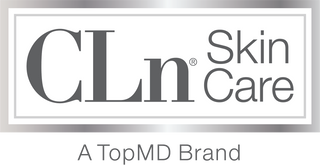
So what, exactly, is dermatitis?
Strictly speaking, it’s inflammation of the skin from any cause at all – sometimes with redness and itching, sometimes with peeling and cracking, and sometimes with all of the above. When that cause is an allergen – like the oil from poison ivy, or that pair of cheap earrings which has too much nickel and not enough gold – we call it an allergic contact dermatitis, and the definitive treatment is simply removing the offending agent (though a topical steroid cream can speed up the healing).
And when it’s an irritant – like the fragrance that is put in your soap or deodorant stick, or those water shoes that trap moisture on the bottom of your child’s feet in the summer – we call it an irritant contact dermatitis. Again, the definitive treatment is removal of the trigger, and perhaps adjunctive topical steroids.
Most often, though, what we are talking about when we say “dermatitis” is atopic dermatitis (also referred to as eczema) – which is a dysfunction in the most superficial layer of our skin (the epidermis) leading to loss of moisture, damage to skin surface proteins, and the almost inevitable progression to redness, itching, cracking and peeling.
And so for atopic dermatitis and eczema, it is not as simple as just removing the trigger that causes the problem (as many people with atopic dermatitis have a genetic predisposition that cannot be “removed”, and all sufferers are triggered, to one extent or another, by their general environment). In this case, the best way to address atopic dermatitis – the single most common form of dermatitis – is to get the skin ready for battle.
So What Do I Do If I Have Atopic Dermatitis or Eczema?
The good news is that this is the easy part, as there is now consensus amongst dermatologists and allergists on how to approach eczema in children and adults.
The first step is the daily use of an over-the-counter moisturizer. Occlusive agents (which trap water in the skin and block excessive moisture out) like ceramides, and emollients (which repair small skin cracks) like niacinamides are great first steps – and can be found in the CLn Facial Moisturizer, as well as other OTC products. Humectants (which draw water into skin) like glycerin – which can be found in a bath wash formulation in the CLn 2-in-1 Gentle Wash & Shampoo – are also useful adjuncts in a regimen tailored to repairing skin integrity.
Most frequently, the next step that is added on to moisturization is the use of a topical steroid cream or ointment on a once-daily, as needed basis. Though this step is often initiated by a doctor, it need not be, as there are several low potency steroid formulations available at your local pharmacy.
And there is now a third step that can be undertaken within your home, before you even need to book that doctor visit: The skin surface can be cleansed and optimized by bathing with sodium hypochlorite (bleach).
Wait a Second – How Does Bleach Work?
Sodium hypochlorite has been used for hundreds of years in the treatment of skin infections and for decades as a therapy for atopic dermatitis – but it was not until 2023 that bleach got the official nod from the American Academy of Asthma, Allergy and Immunology in the treatment of eczema.
So how does it work?
Research has demonstrated that the skin microbiome – the bacteria, fungus and general “germs” that live on the surface of our skin – affect the incidence and severity of eczema. Imbalances and overgrowth in this microbiome can cause atopic dermatitis to flare. In fact, the presence and amount of Staphylococcus aureus – often referred to simply as “Staph” – correlates to eczema severity, and reduction in Staph on the skin leads to eczema improvement.
Sodium hypochlorite, including the CLn Body Wash, is antimicrobial, and can significantly reduce the colony counts of bacteria (including Staph), fungus and viruses. This has been proven in clinical research, including studies that specifically utilized the CLn Body Wash, and is the likely mechanism through which bleach improves atopic dermatitis.
Bleach may have anti-inflammatory effects, too, which may promote a reduction in redness, itch, peeling and cracking.
How to Create an Effective Cleansing Routine for Dermatitis-Prone Skin?
Well, one way is to fill your bathtub with water, pour in a cup of bleach, and then either soak yourself in it or throw your kid in. Though effective, most people don’t like to do this more than once, and no one likes the added hassle of keeping bleach out of their child’s eyes.
Another way, which is both easier to comply with and utilize daily, is to use a bath gel with sodium hypochlorite in it, at concentrations typically found in a bleach bath.
The CLn Body Wash, CLn Sport Wash, and CLn 2-in-1 Gentle Wash & Shampoo all fit that bill. To use them effectively, simply wet your body in the bath or shower, apply the wash to your skin for 1-2 minutes, and then rinse off. Moisturizing immediately after the bath or shower is another effective, and relatively easy, step to take.
Take the Next Step in Managing Your Dermatitis
Living with dermatitis doesn’t have to mean constant discomfort and irritation. With the right body wash, you can take control of your skin’s health and reduce the frequency of flare-ups. CLn BodyWash is designed to offer a gentle, effective way to manage and support compromised skin.
